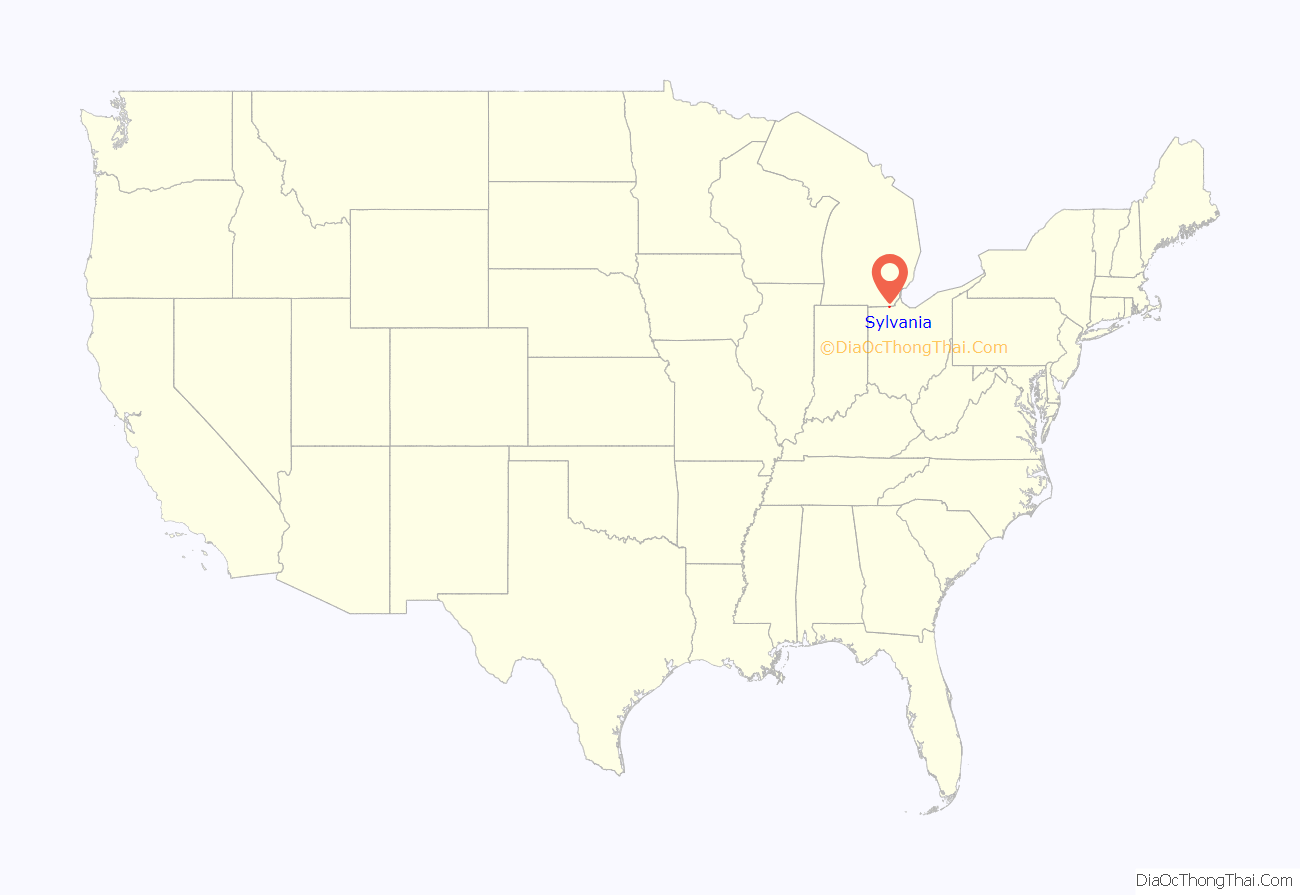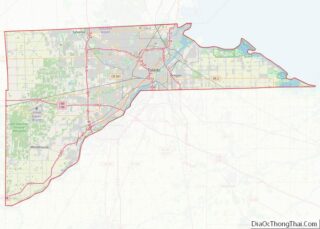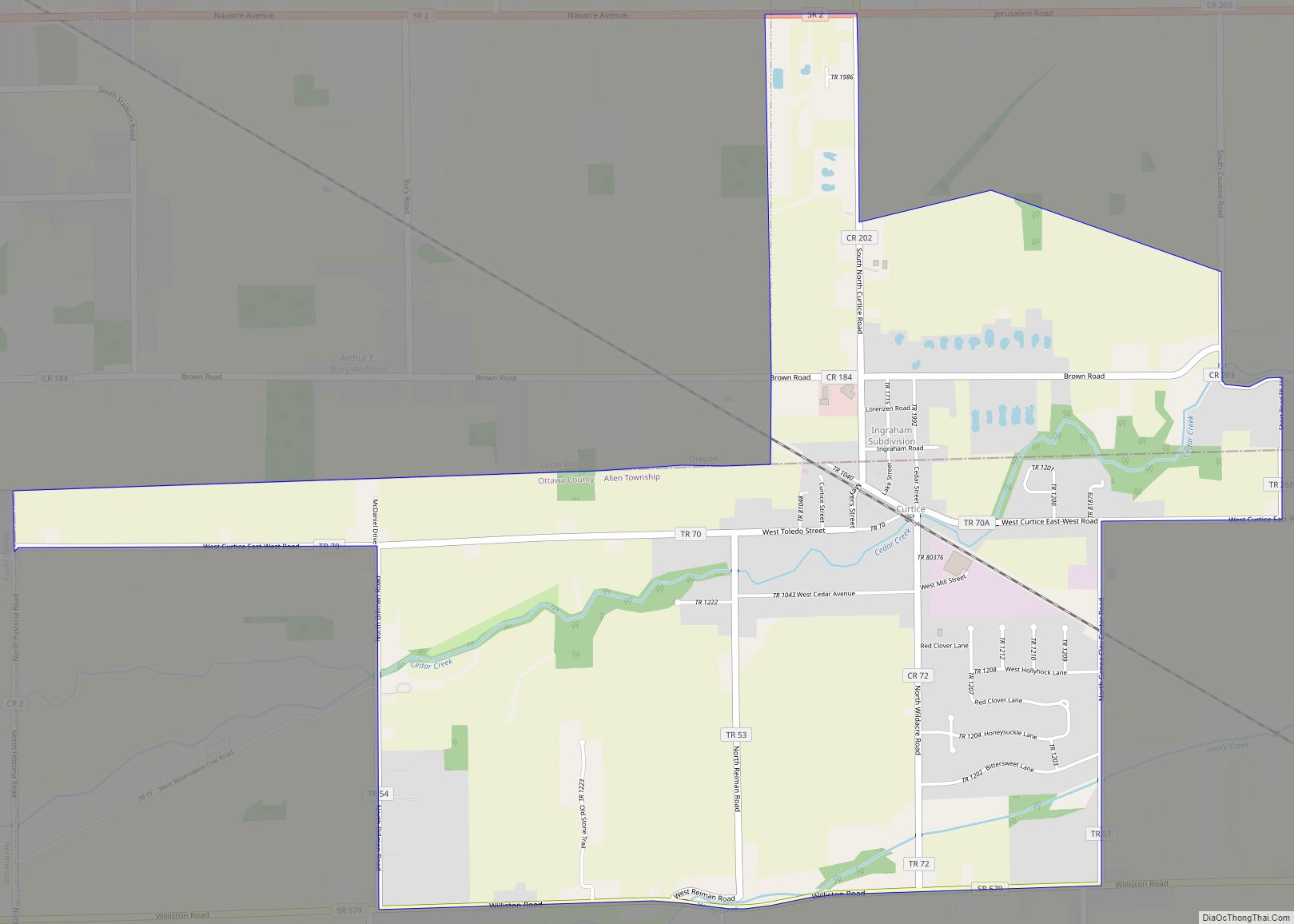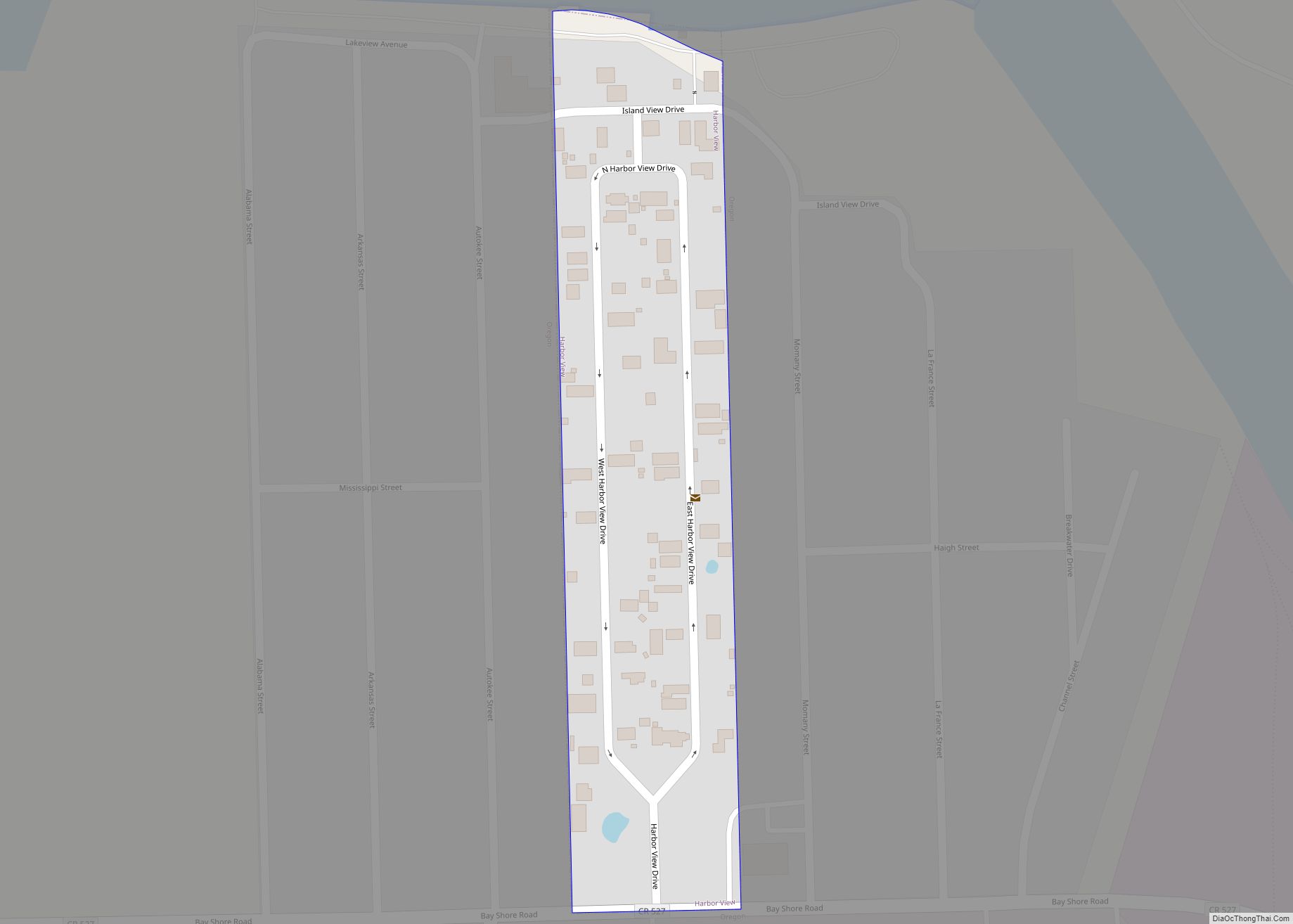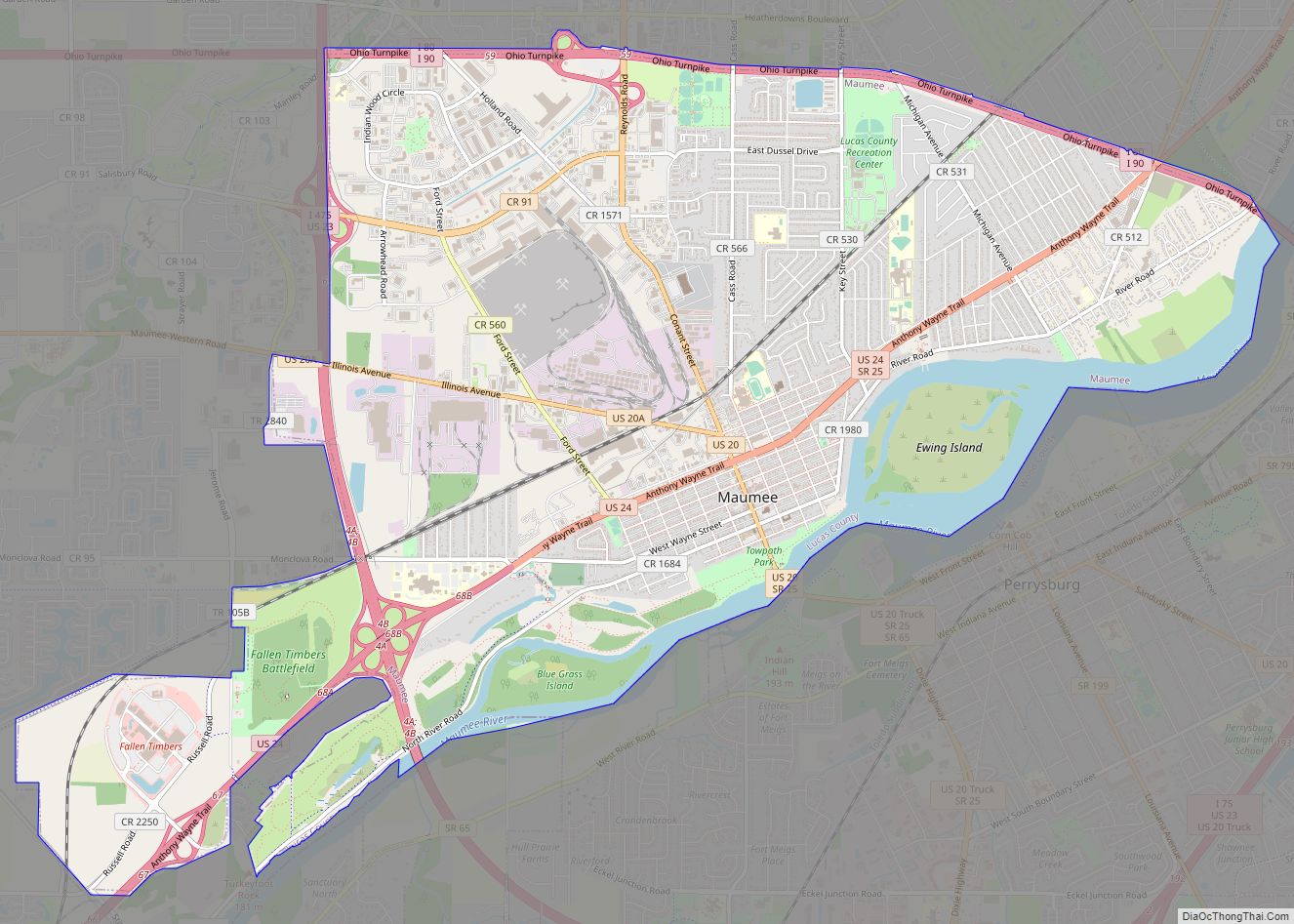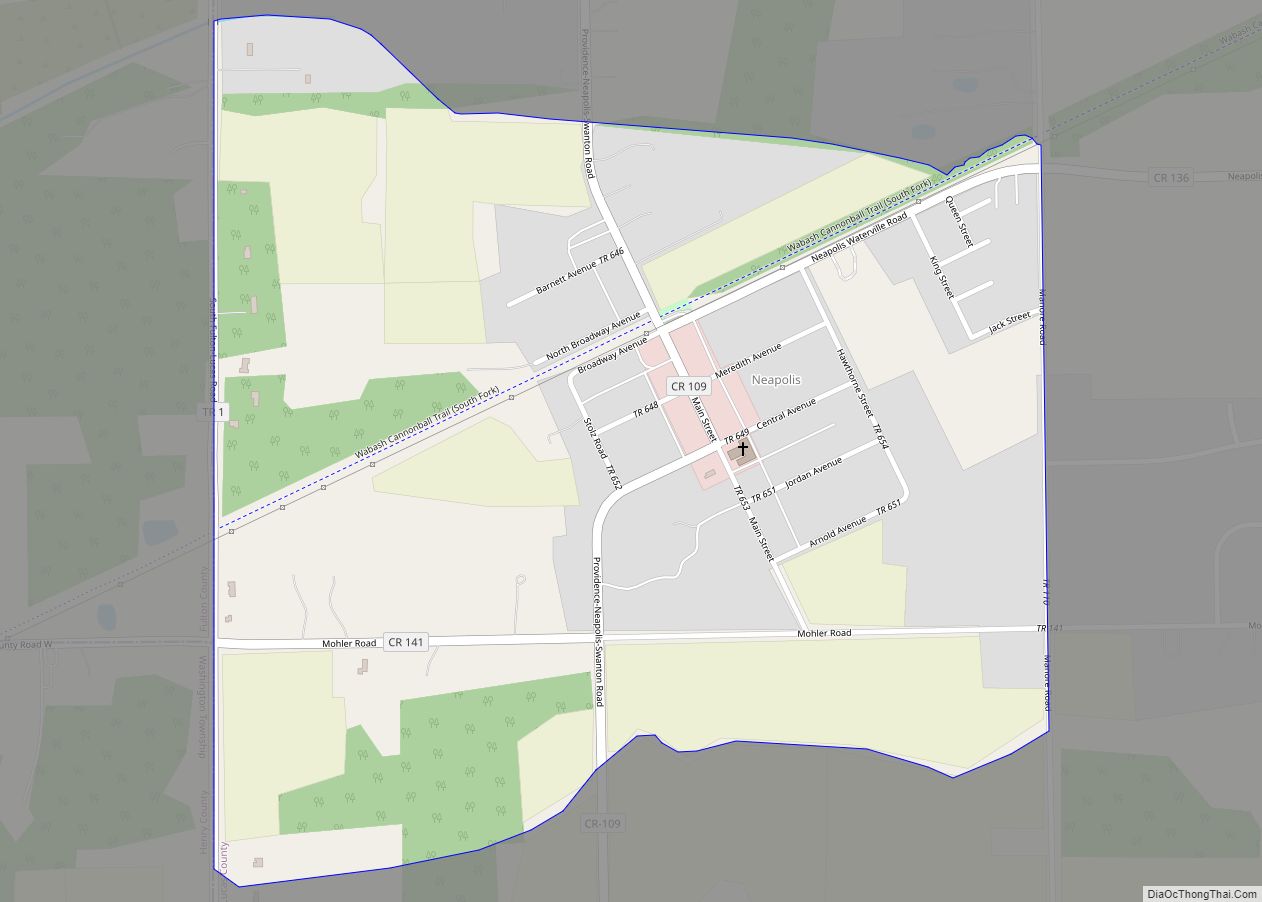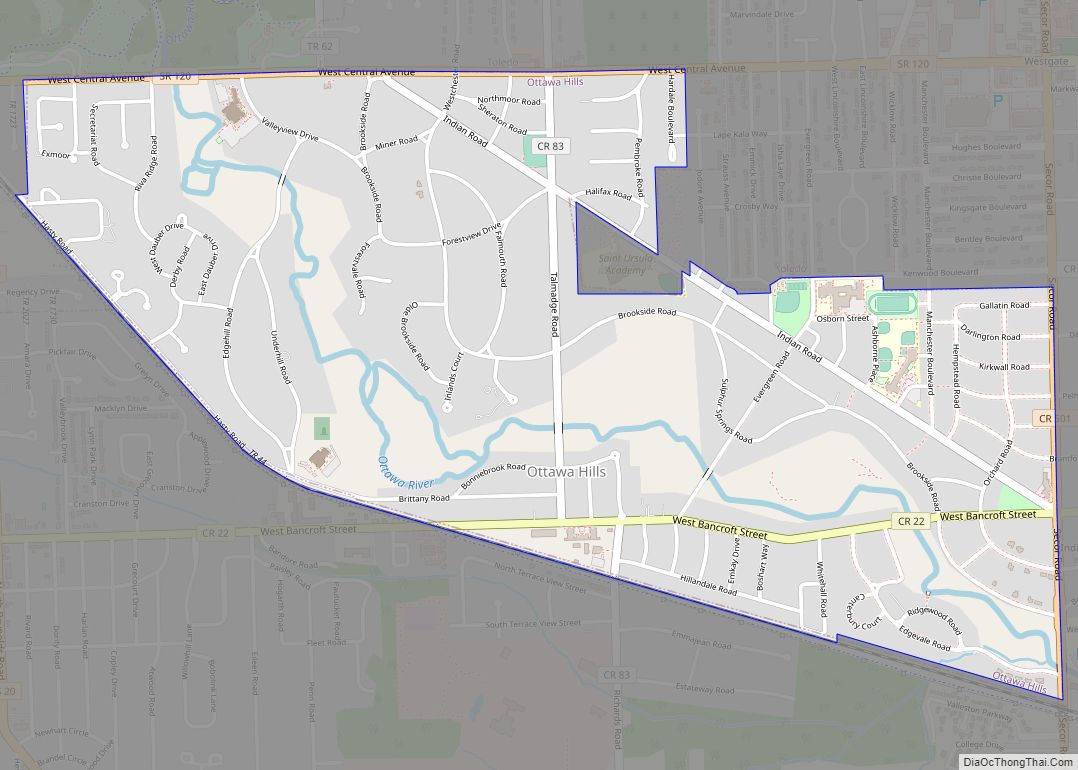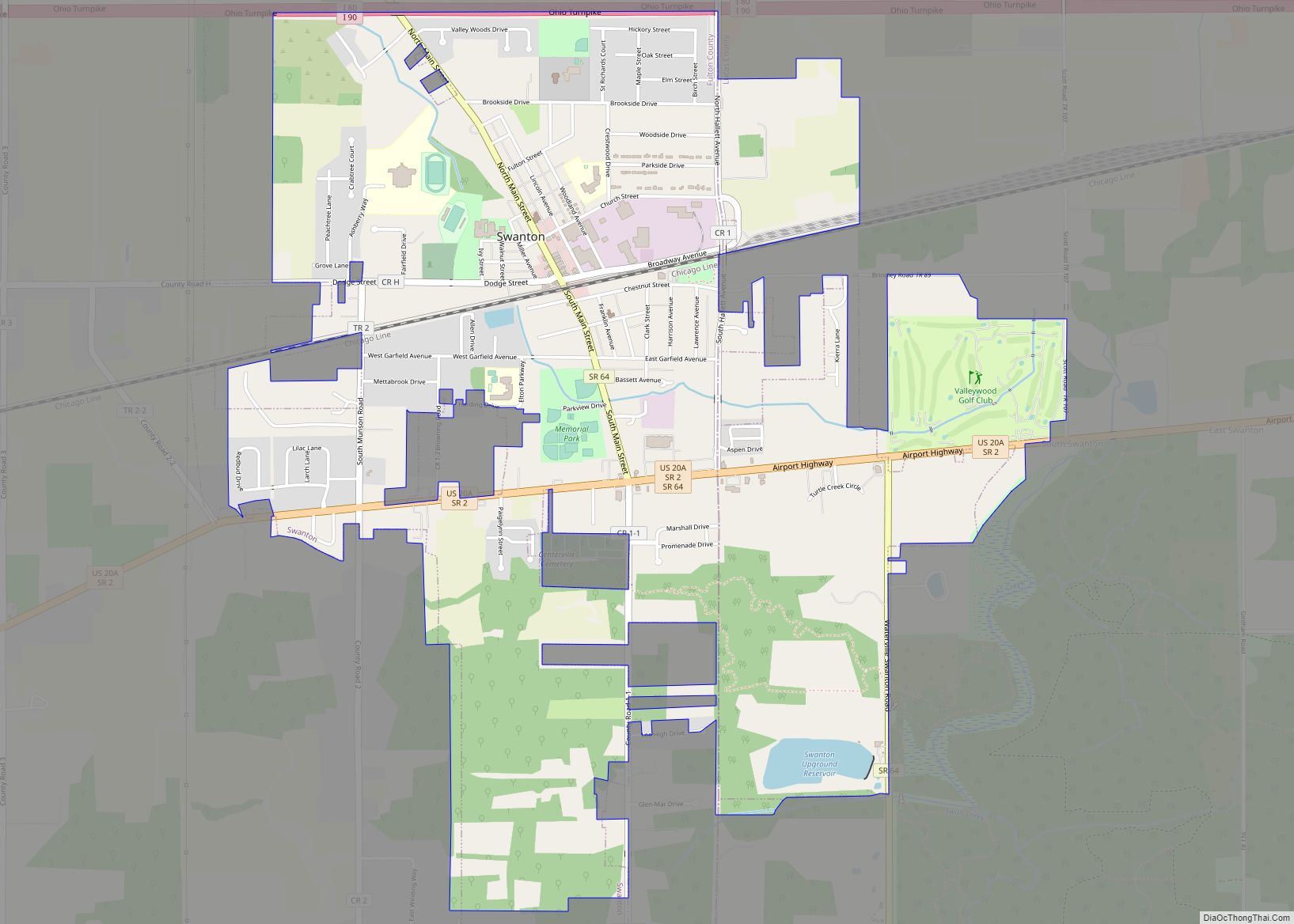Sylvania is a city in Lucas County, Ohio, United States. The population was 19,011 at the 2020 census. Sylvania is a suburb of Toledo, and encompassed by Sylvania Township. Its northern border is the southern border of the state of Michigan.
The name “Sylvania” is borrowed from the Latin sylvan or sylva, meaning “forest land”, owing to the dense forests that once made up the region, part of the Great Black Swamp.
| Name: | Sylvania city |
|---|---|
| LSAD Code: | 25 |
| LSAD Description: | city (suffix) |
| State: | Ohio |
| County: | Lucas County |
| Elevation: | 663 ft (202 m) |
| Total Area: | 6.72 sq mi (17.40 km²) |
| Land Area: | 6.67 sq mi (17.26 km²) |
| Water Area: | 0.05 sq mi (0.14 km²) |
| Total Population: | 19,011 |
| Population Density: | 2,852.36/sq mi (1,101.26/km²) |
| ZIP code: | 43560 |
| Area code: | 419 |
| FIPS code: | 3976022 |
| GNISfeature ID: | 1061668 |
| Website: | www.cityofsylvania.com |
Online Interactive Map
Click on ![]() to view map in "full screen" mode.
to view map in "full screen" mode.
Sylvania location map. Where is Sylvania city?
History
General David White is considered the founder of Sylvania as the first pioneer settler and town supervisor, originally from Palmyra, New York. In 1832, White was given the title of General (possibly after services rendered during the War of 1812), which allowed him to explore the western Lake Erie region. In realizing the potential of some available land to the north of Maumee, Ohio, a notable port city at the time, he acquired a title to the land and built a log cabin at what would eventually be the corner of Summit and Monroe streets near downtown Sylvania.
Prior to White’s acquisition, the land was a part of Port Lawrence Township, Monroe County, Michigan. Over the course of several years, White, along with his associate, Judge William Wilson, purchased a total of 1,920 acres (780 ha) of Port Lawrence and surrounding land in what would eventually become Sylvania, and 1,720 acres (700 ha) of what would become Whiteford Township, Michigan, where he also served as the first town supervisor. The relationship between White and Wilson did not last, and when the boundary dispute that lead to the largely bloodless Toledo War began in 1834, they began splitting the lands they had purchased, platting their own towns. That year, White established the first area school in Whiteford, and platted the township there one year later in 1835. Wilson presented the original plat for Sylvania in June 1836, with the town of Whiteford directly adjacent.
Throughout the 1830s and 1840s, rail transportation saw significant expansion throughout the Great Lakes region. In 1833, the Erie and Kalamazoo Railroad was chartered as part of the Lake Shore and Michigan Southern Railway, running from former Port Lawrence, Michigan (now Toledo, Ohio), to the mouth of the Kalamazoo River at Lake Michigan. Trains were at first pulled by horse until the first steam locomotive was installed in 1837. Sylvania built its own railroad depot along the Erie-Kalamazoo Railroad in 1858. While the depot is no longer in operation, the original station building exists as an exhibit in the Sylvania Historical Village, still next to the railroad which remains in use.
Sylvania was incorporated in 1867. A post office called Sylvania has been in operation since 1859.
Sylvania Road Map
Sylvania city Satellite Map
Geography
Sylvania is located at 41°42′41″N 83°42′12″W / 41.71139°N 83.70333°W / 41.71139; -83.70333 (41.711450, -83.703210), approximately 10 miles (16 km) west-northwest of Toledo. According to the United States Census Bureau, the city has a total area of 6.68 square miles (17.30 km), of which 6.63 square miles (17.17 km) are land and 0.05 square miles (0.13 km) are water.
The city lies at the junction of two creeks: Ottawa Creek, flowing south from the community of Ottawa Lake, Michigan, about four miles north of the city, and Ten Mile Creek, a tributary of Ottawa Creek running about 30 miles (48 km) from the west, which becomes the Ottawa River and empties into the Maumee River.
The city is built on large shale deposits, which over hundreds of years have been mined in quarries to make concrete, cement and other stone products. Silica shale from the region is renowned among paleontologists for its high-quality fossils from the early Devonian period.
Notable landmarks
- The Lathrop House, built in 1853 by minister Lucian Lathrop and wife Larissa, was used by abolitionists as a stop on the Underground Railroad. Slaves trying to escape to freedom in the north were given food and shelter, in a secret room behind an oven door. The house is recognized by the National Trust for Historic Preservation as a building of significant historical and cultural importance. The building was originally located on Main St, just south of downtown Sylvania, but after a 2002 land dispute, it was moved to Harroun Park across the street.
- The Harroun Family Barn was built by David and Clarissa Harroun in 1858. The Harrouns and their son Edwin aided slaves along the Underground Railroad, transporting them from Maumee, Ohio in David’s lumber wagon and hiding them in their basement, before they made their way into Michigan. The Harroun property was connected to the Lathrop house via a ravine that ran between them; much of the ravine still exists and the road that runs along it is named Ravine Road.
- The Sylvania Historical Village is an open-air museum in downtown Sylvania, that features both original and reproductions of historical buildings in the city, including the original railroad depot that operated in the area for over 100 years, and an original 1800s log home.
- Fossil Park is a notable attraction that opened in 2001. Visitors can break apart loose shale from a nearby quarry, which often contain fossil specimens such as trilobites. It is one of two locations in the world where visitors without any paleontological experience are allowed to search for fossils themselves.
- The Burnham Building, originally Burnham High School, built in 1927, served as an area high school until the final class graduated in 1960. It was then used as a multipurpose facility until 2010, when it was demolished to make way for the new Maplewood Elementary School.A Phacops rana trilobite fossil found in Fossil Park
Parks and recreation
The city is home to over 250 acres of parkland, which include Olander Park, Harroun Community Park, Pacesetter Park, Veterans Memorial Park, and Burnham Park. The Olander Park System (“TOPS”) has a large 28 acre pond as well as other satellite parks (Fossil Park, Sylvan Prairie Park, Whetstone Park and Southview Oak Savanna). Pacesetter Park has lacrosse, soccer, and baseball fields, and Burnham Park contains Plummer Pool, a public swimming pool.
Many of Sylvania’s recreational activities are organized by the Sylvania Area Joint Recreation Department (SAJRD). They operate multiple facilities and parks, including Pacesetter, Veterans Memorial and Burnham parks, as well as a recreation center, Tam-O-Shanter, with two ice skating rinks and two indoor soccer fields. The center offers indoor sports such as soccer, baseball, lacrosse, ice hockey, and ice skating.
The city has received the “Tree City” designation from the Tree City USA program for over 30 years, which recognizes communities for urban and community forestry. The nickname of the city is the literal translation of its name, “City of Trees”.
In 2016, a steel beam from the World Trade Center was installed in the “9/11 First Responders Last Call Memorial” at the Toledo Memorial Park cemetery in Sylvania.
See also
Map of Ohio State and its subdivision:- Adams
- Allen
- Ashland
- Ashtabula
- Athens
- Auglaize
- Belmont
- Brown
- Butler
- Carroll
- Champaign
- Clark
- Clermont
- Clinton
- Columbiana
- Coshocton
- Crawford
- Cuyahoga
- Darke
- Defiance
- Delaware
- Erie
- Fairfield
- Fayette
- Franklin
- Fulton
- Gallia
- Geauga
- Greene
- Guernsey
- Hamilton
- Hancock
- Hardin
- Harrison
- Henry
- Highland
- Hocking
- Holmes
- Huron
- Jackson
- Jefferson
- Knox
- Lake
- Lake Erie
- Lawrence
- Licking
- Logan
- Lorain
- Lucas
- Madison
- Mahoning
- Marion
- Medina
- Meigs
- Mercer
- Miami
- Monroe
- Montgomery
- Morgan
- Morrow
- Muskingum
- Noble
- Ottawa
- Paulding
- Perry
- Pickaway
- Pike
- Portage
- Preble
- Putnam
- Richland
- Ross
- Sandusky
- Scioto
- Seneca
- Shelby
- Stark
- Summit
- Trumbull
- Tuscarawas
- Union
- Van Wert
- Vinton
- Warren
- Washington
- Wayne
- Williams
- Wood
- Wyandot
- Alabama
- Alaska
- Arizona
- Arkansas
- California
- Colorado
- Connecticut
- Delaware
- District of Columbia
- Florida
- Georgia
- Hawaii
- Idaho
- Illinois
- Indiana
- Iowa
- Kansas
- Kentucky
- Louisiana
- Maine
- Maryland
- Massachusetts
- Michigan
- Minnesota
- Mississippi
- Missouri
- Montana
- Nebraska
- Nevada
- New Hampshire
- New Jersey
- New Mexico
- New York
- North Carolina
- North Dakota
- Ohio
- Oklahoma
- Oregon
- Pennsylvania
- Rhode Island
- South Carolina
- South Dakota
- Tennessee
- Texas
- Utah
- Vermont
- Virginia
- Washington
- West Virginia
- Wisconsin
- Wyoming
